Study on the Pore Structure Characteristics of Shale by Atomic Force Microscope and Energy Spectrum-Scanning Electron Microscope
-
摘要: 已有研究表明页岩中纳米孔隙与组成导电膜的金颗粒处在同一量级,使得页岩中纳米孔隙在一定程度上被金颗粒掩埋,导致页岩中纳米孔隙被“二次改造”,从而无法真实观察到页岩中孔隙的形态特征;其次,由于受仪器分辨率、景深等因素的制约,无法观察到孔隙的三维展布特征。因此,如何真实地揭示纳米孔隙的空间结构特征,以及如何有效避免金颗粒对页岩储层中纳米孔隙的“二次改造”一直是微区分析的难点。本文通过扫描电镜(SEM)与原子力显微镜(AFM)方法组合观察到四川盆地龙马溪组黑色页岩中有机孔与无机孔在二维平面的分布存在较强的非均值性,孔径与孔隙的空间延展性呈现明显的正相关关系。有机孔呈蜂窝状分布,孔径主要分布在微米量级0.1~0.4μm,孔隙在三维空间呈现明显的“一体化”特征,具有较好的空间连通性;无机孔主要发育黏土矿物的层间孔隙,孔径主要分布在纳米量级16~57nm,此外见少量的矿物粒内不规则状溶蚀孔。研究认为,页岩中孔隙在二维平面的非均值性导致孔隙、喉道的分布会发生突变,从而影响储层的储集性能;页岩中孔隙在三维空间的非均值性导致页岩储层的渗透率在纵向上出现较大的差异,从而影响储层的物性特征。要点
(1) AFM技术避免了孔隙的“二次改造”,是一种真实、有效的表征纳米孔隙结构的方法。
(2) 龙马溪组黑色页岩中孔径的大小与空间的延展呈正相关关系。
(3) 有机孔较无机孔的孔径大一个数量级,空间连通性较好。
HIGHLIGHTS(1) Using AFM technology avoided secondary pore modification, which was a real and effective method to characterize the nano-pore structure.
(2) The pore size of black shale in Longmaxi Formation was positively correlated with the spatial extension.
(3) The size of organic pores was one order of magnitude larger than that of inorganic pores, with better spatial connectivity for the former.
Abstract:BACKGROUNDStudies have shown that the nano-pores in shale are at the same magnitude as the gold particles that make up the conductive film, and thus the pore size of nano-pores is blocked and buried by gold particles. The planar morphological characteristics of nano-pores cannot be observed due to the 'secondary transformation' of pores. Moreover, limited by the resolution and depth of field of the instrument, the spatial ductility and other structural characteristics of nano-pores cannot be observed. Therefore, how to truly reveal the spatial structure characteristics of nano-pores and how to effectively avoid the 'secondary modification' of nano-pores in shale reservoirs by gold particles has always been a difficulty in microanalysis.OBJECTIVESTo characterize the two/three dimensional structural characteristics of nano-pores in shale.METHODSAtomic force microscopy (AFM) and scanning electron microscopy (SEM) were used to observe the pore features.RESULTSThe distribution of organic and inorganic pores in the black shale of the Longmaxi Formation in the Sichuan Basin has strong non-meanness, and the pore size and spatial ductility of the pores were significantly positively correlated. The organic pores were distributed in a honeycomb shape, with the pore size from 0.1 to 0.4μm. The pores show an obvious 'integrated' feature in the three-dimensional space and have good spatial connectivity. Inorganic pores mainly develop interlayer pores of clay minerals, and the pore size was mainly distributed between 16 and 57nm. In addition, there were a few irregular dissolution pores in mineral grains.CONCLUSIONSThe non-meanness of pores in the 2D plane of shale leads to abrupt changes in the distribution of pores and throats, which affects the reservoir performance. The non-meanness of pores in shale in three-dimensional space leads to the great difference of permeability of shale reservoir in the longitudinal direction, which affects the physical characteristics of the reservoir.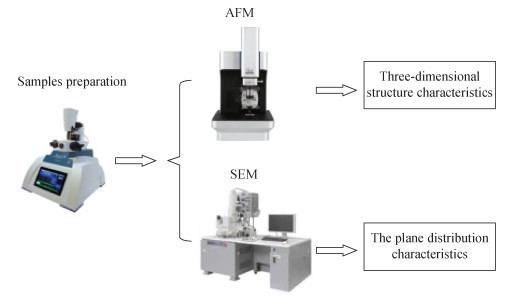
-
随着页岩储层研究的深入,揭示了纳米孔隙在页岩储层中的重要意义,从而使纳米孔隙的结构特征成为微区分析研究的焦点,但受仪器的分辨率、景深及样品前处理等因素的制约,无法真实地揭示纳米孔隙的孔径分布,无法有效地呈现纳米孔隙的空间展布规律等结构特征,从而影响页岩储层的划分及页岩气储量的计算。近年,通过对我国南方海相页岩气富集机理、中上扬子下寒武统页岩储层特征及川东龙马溪组页岩孔隙特征的研究,证实了页岩孔隙结构的空间特征及演化是控制页岩气富集的条件之一,从而使得页岩中孔隙结构的研究日趋深入[1-6]。但是,由于页岩中黏土矿物特殊的物化性能与复杂的组构特征,不仅使孔隙细小,而且还存在较强的非均匀性,导致采用常规方法难以观察到孔隙的三维空间形态及连通性等结构特征[7-8]。
页岩储层孔隙结构的研究手段分为定性表征与定量分析。定性表征手段主要是利用物理手段观察孔隙的形态、大小及空间展布等结构特征,目前用于页岩孔隙定性表征手段有扫描电镜、聚焦离子束扫描电镜等。利用该类手段研究我国中上扬子地区下奥陶系五峰组、志留系龙马溪组页岩储层,观察到了页岩中无机孔与有机孔的孔径大小、孔隙形态及平面展布特征等结构特征,为页岩气储量的计算、储层的评价提供了依据[9-12]。但是由于页岩储层中发育的纳米孔隙,孔径分布在2~50nm,离子溅射喷镀的金颗粒,粒径5~10nm,两者处在同一量级,再加之离子溅射仪使金颗粒在样品表面形成连续的导电膜,从而导致孔径在2~10nm的孔隙被金颗粒直接“掩埋”,孔径>10nm的孔隙被金颗粒充填,使页岩中纳米孔隙的大小、形态等特征发生改变,使页岩中的纳米孔隙由于金颗粒的影响而产生二次改造,无法真实地呈现纳米孔隙的结构特征,从而直接影响孔隙结构的定性表征结果[13-15]。此外,电子显微镜受仪器“景深”的制约,主要观察孔隙在二维平面的特征,无法揭示孔隙在三维空间的展布特征,导致页岩储层孔隙空间结构研究停滞不前,影响页岩储层的评价与精细化研究。
本文利用氩离子抛光仪、能谱-扫描电镜与原子力显微镜组合开展页岩孔隙结构特征的观察。首先利用氩离子抛光仪制备高质量抛光镜面,再通过能谱-扫描电镜观察页岩中各类孔隙在二维平面的形状与分布规律,以此为基础利用原子力显微镜的非接触模式(NCM)与轻敲模式(Taping)分别从二维和三维两个维度进行精细化扫描,观察页岩储层中各类孔隙的平面形态、空间展布等结构特征,从而为储层评价提供微观依据[16-17]。
1. 实验部分
1.1 实验样品
实验样品为川东龙马溪组黑色页岩,岩石具粉砂泥质结构,其中黏土矿物主要是白云母,白云母部分伊利石化,碎屑矿物主要为石英、长石,含少量自形白云石,重矿物主要为草莓状黄铁矿,含少量有机质,部分有机质充填粒间孔隙或黏土矿物层间微孔隙。
1.2 实验仪器
样品制备利用普锐斯PRESI MECATOME T201A自动切割机,沿纵向从页岩样品上面切下尺寸为2.5cm×2.5cm,经500目、1000目、2000目、3000目砂纸进行细抛光后,制备成尺寸为7mm×7mm×4mm的块状样品,放入氩离子抛光仪进行精细抛光,获得具有高质量镜面的样品。
1.3 实验方法
1.3.1 氩离子抛光仪
实验采用Gatan 697双离子束氩离子抛光仪,切割角度1°~2°;加速电压3.5kV,转速6r/min,抛光时间3h。
1.3.2 能谱-扫描电镜
实验采用Hitachi S-4800场发射扫描电镜与Oxford-Horiba EX-450型EDX,加速电压20kV,束流10μA,工作距离15mm。
1.3.3 原子力显微镜
实验采用Park NX10,横向分辨率0.05nm,纵向分辨率0.015nm,XY扫描范围:100μm×100μm,Z扫描范围:15μm。在原子力扫描过程中,参数的选择兼顾不同扫描范围下仪器的分辨率与页岩中孔隙的孔径大小,避免扫描范围过大造成部分纳米孔隙的遗漏,避免扫描频率太高在孔隙扫描过程中出现挂针现象,从而影响图像质量。详细参数见表 1。
表 1 原子力显微镜参数Table 1. Parameters of atomic force microscope扫描模式 接触模式 扫描频率
(Hz)扫描范围 Z Gain SetPoint 成像信号 快速扫描 非接触模式
(NCM)0.5 20μm×20μm 1.5 20nm Z Height 精细扫描 轻敲模式
(Taping)0.4 5μm×5μm 2 15nm Z Drive 2. 结果与讨论
2.1 孔隙形态特征
能谱-扫描电镜在页岩孔隙结构的观察中,具有连续可变视域与快速定性/定量分析优势,所以可快速准确地在二维平面对页岩孔隙的类型、分布规律及矿物间的组构特征进行观察[18-19]。本文利用能谱-扫描电镜观察到页岩中孔隙类型多样,有机孔发育,孔径大小不一,呈蜂窝状分布,平面上呈溶蚀港湾状等不规则状形态;无机孔主要是黏土矿物层间微缝隙,其次为矿物粒内不规则状溶蚀孔隙,黏土矿物层间主要发育纳米-微米级层间微缝隙,在平面上呈不规则状分布;矿物粒内不规则状溶蚀孔隙,主要发育在长石及白云石颗粒内,孔隙在平面呈不规则状分布(图 1)。
2.2 页岩孔隙宏观特征
页岩储层主要发育纳米级微孔隙,微孔(< 2nm)、中孔(2~50nm)、大孔(>50nm),该类孔隙是页岩气的主要储集空间,是储层评价的主要内容之一[20-22]。本文主要利用原子力显微镜同时在二维、三维空间观察页岩孔隙的结构特征。首先,在光学显微镜下预选区,选择非接触模式(NCM)、扫描区20μm×20μm,对页岩进行大面积的快速扫描,从大面积形貌图像来看,石英颗粒内部见孤立的溶蚀孔隙,颗粒边缘见黏土矿物的微孔隙与有机质中不规则溶蚀状,孔隙大小差异较大,经仪器测定获得孔径分布3~550nm,从而可为页岩气储量计算提供更加准确的微观孔隙信息。此外,观察到样品表面局部区域有残留的矿物碎屑,导致探针与样品表面异常接触,在形貌图中表现为异常的凸起,遗失污染区的形貌特征(图 2)。
2.3 页岩孔隙显微特征
2.3.1 有机孔隙显微结构精细观察
在扫描区域20μm×20μm的条件下,仪器的分辨率无法精细揭示纳米孔隙的空间展布特征,在大面积扫描基础上,进一步对扫描区的有机孔隙进行精细化扫描,进而揭示其空间的形态等特征。在精细化扫描过程中,为了避免孔隙边界由于纵向上高差突变对图像产生干扰,使用自动增益功能,自动根据形貌高差的变化,采用合适的增益系数,消除其对图像的干扰。精细化扫描选择轻敲模式(Taping),有机孔扫描区域5μm×5μm,无机孔扫描区域2μm×2μm。从有机孔形貌图来看,该类孔隙呈不规则长条状、溶蚀港湾状等不规则形态,孔隙边缘呈锯齿状,通过谱线轮廓图观察到,有机孔在三维空间呈上宽下窄的“漏斗”状,曲线呈阶梯状,表明有机质孔隙在形成过程中具有明显的非均质性。从有机孔三维体视图中观察到,由于受页岩组构的非均质性影响,孔隙在空间的发育呈现较强的非均匀性,但是孔隙在空间中呈明显的“一体化”特征,表明相邻孔隙具有较好的连通性(图 3)。此外,通过测量有机孔隙在平面的孔径分布在0.1~0.4μm,纵向深度分布在107~187nm,通过数据分析孔隙在二维平面的孔径越大,其在空间的延伸越长,两者之间表现出较好的正相关关系(图 4)。
2.3.2 无机孔隙显微结构精细观察
页岩中含有丰富的黏土的矿物,含量可达16.8%~70.1%,黏土矿物中发育着大量的层间微缝隙,是吸附气的主要储集空间之一,所以该类孔隙亦是页岩储层研究的主要内容之一[23-24]。在大面积扫描基础上,进一步对扫描区的无机孔隙进行精细化扫描,进而揭示其空间形态等特征。从黏土矿物形貌图来看,黏土矿物中孔隙呈多种不规则形状,纳米级孔隙发育,其次发育少量的微米孔隙,通过谱线轮廓图观察到,黏土矿物中孔隙在三维空间呈上宽下窄的“漏斗”状,且曲线平滑,表明孔隙内壁未受到溶蚀作用,为自生孔隙。从黏土矿物孔隙三维体视图中观察到,由于黏土矿物层间缝隙发育,该类孔隙在空间中呈明显的“一体化”特征,表明其具有良好的空间网络连通性(图 5)。通过对无机孔隙的孔径进行测量,孔隙在平面的孔径分布在16~57nm,纵向深度分布在2~30nm,该类孔隙的孔径明显比有机孔小,但是孔隙的孔径与空间延展性亦具有明显的正相关关系(图 6)。此外,从无机孔形貌图来看,矿物粒内溶孔不发育,一般为孤立的溶蚀孔,不具有连通性,是页岩储层中的无效孔。
3. 结论
本文利用氩离子抛光仪、能谱-扫描电镜与原子力显微镜方法组合,观察到四川龙马溪组黑色页岩中发育有机孔、黏土矿物层间孔及少量矿物粒内不规则溶孔。有机孔在二维平面呈蜂窝状分布,从而影响了局部孔隙与喉道的配位关系,有机孔在三维空间呈现明显的“一体化”特征,导致页岩储层的渗透率在纵向上会出现突变;无机孔主要发育黏土矿物层间微孔隙,孔径主要在纳米量级,该类孔隙在平面的分布存在较强的非均值性。此外,通过对页岩孔隙的纵横向特征的分析,发现孔隙的平面大小与空间延展呈现明显的正相关关系。
本文采用的分析方法组合,在样品制备过程中真实地呈现了页岩样品的性状;在页岩孔隙结构观察过程中,结合了扫描电镜连续可变视域与原子力显微镜超高空间分辨率的优势,既观察到了页岩中孔隙在二维平面的宏观分布特征,还从三维空间揭示了孔隙的空间延展性等特征,但是该方法受限于压电陶瓷技术,导致分析区域存在一定的局限性,从而会遗漏部分宏观特征,因此需与其他微区分析手段联用,从而更系统、客观地揭示了页岩中孔隙的结构特征,为页岩储层的评价提供科学的微观依据。
-
表 1 原子力显微镜参数
Table 1 Parameters of atomic force microscope
扫描模式 接触模式 扫描频率
(Hz)扫描范围 Z Gain SetPoint 成像信号 快速扫描 非接触模式
(NCM)0.5 20μm×20μm 1.5 20nm Z Height 精细扫描 轻敲模式
(Taping)0.4 5μm×5μm 2 15nm Z Drive -
高波, 刘忠宝, 舒志国, 等.中上扬子地区下寒武统页岩气储层特征及勘探方向[J].石油与天然气地质, 2020, 41(2):284-294. Gao B, Liu Z B, Shu Z G, et al.Reservoir characteristics and exploration of the Lower Cambrian shale gas in the Middle-Upper Yangtze area[J].Oil & Gas Geology, 2020, 41(2):284-294.
肖佃师, 赵仁文, 杨潇, 等.海相页岩气储层孔隙表征、分类及贡献[J].石油与天然气地质, 2019, 40(6):1215-1225. Xiao D S, Zhao R W, Yang X, et al.Characterization, classification and contribution of marine shale gas reservoirs[J]. Oil & Gas Geology, 2019, 40(6):1215-1225.
姜振学, 唐相路, 李卓, 等.川东南地区龙马溪组页岩孔隙结构全孔径表征及其对含气性的控制[J].地学前缘, 2016, 23(2):126-134. Jiang Z X, Tang X L, Li Z, et al.The whole-aperture pore structure characteristics and its effect on gas content of the Longmaxi Formation shale in the southeastern Sichuan Basin[J].Earth Science Frontiers, 2016, 23(2):126-134.
朱炎铭, 王阳, 陈尚斌, 等.页岩储层孔隙结构多尺度定性-定量综合表征:以上扬子海相龙马溪组为例[J].地学前缘, 2016, 23(1):154-163. Zhu Y M, Wang Y, Chen S B, et al.Qualitative-quantitative multiscale characterization of pore structures in shale reservoirs:A case study of Longmaxi Formation in the Upper Yangtze area[J].Earth Science Frontiers, 2016, 23(1):154-163.
蒋裕强, 付永红, 谢军, 等.海相页岩气储层评价发展趋势与综合评价体系[J].天然气工业, 2019(10):1-9. Jiang Y Q, Fu Y H, Xie J, et al.Development trend of marine shale gas reservoir evaluation and a suitable comprehensive evaluation system[J].Natural Gas Industry, 2019(10):1-9.
Zhen X J, Yan S, Xiang L T, et al.Controlling factors of marine shale gas differential enrichment in southern China[J].Petroleum Exploration and Development, 2020, 47(3):661-673.
蔡潇, 靳雅夕, 叶建国, 等.一种页岩有机孔与无机孔定量表征的方法[J].油气藏评价与开发, 2020, 10(1):30-36. Cai X, Jin Y X, Ye J G, et al.A quantitative characterization method for organic and inorganic pores in shale[J].Reservoir Evaluation and Development, 2020, 10(1):30-36.
Nelson P H.Pore-throat sizes in sandstones, tight sand-stones, and shales[J].AAPG Bulletin, 2009, 93:329-340.
范家维, 陈孔全, 沈均均, 等.中扬子地区当阳复向斜奥陶系五峰组-志留系龙马溪组页岩储层特征[J].石油实验地质, 2020, 42(1):69-78. Fan J W, Chen K Q, Shen J J, et al.Shale reservoir characteristics of Ordovician Wufeng-Silurian Longmaxi Formations in Dangyang synclinorium, Middle Yangtze Region[J].Petroleum Geology & Experiment, 2020, 42(1):69-78.
贾成业, 贾爱林, 韩品龙, 等.四川盆地志留系龙马溪组优质页岩储层特征与开发评价[J].天然气地球科学, 2017, 28(9):1406-1415. Jia C Y, Jia A L, Han P L, et al.Reservoir characterization and development evaluation of organic-rich gas-bearing shale layers in the Lower Silurian Longmaxi Formation, Sichuan Basin[J].Natural Gas Geoscience, 2017, 28(9):1406-1415.
何顺, 秦启荣, 范存辉, 等.川东南丁山地区五峰-龙马溪组页岩储层特征及影响因素[J].油气藏评价与开发, 2019, 9(4):61-69. He S, Qin Q R, Fan C H, et al.Shale reservoir characteristics and influencing factors of Wufeng-Longmaxi Formation in Dingshan area, southeast Sichuan[J].Reservoir Evaluation and Development, 2019, 9(4):61-69.
杨峰, 宁正福, 胡昌蓬, 等.页岩储层微观孔隙结构特征[J].石油学报, 2013, 34(2):301-311. Yang F, Ning Z H, Hu C P, et al.Characterization of microscopic pore structures in shale reservoirs[J].Acta Petrolei Sinica, 2013, 34(2):301-311.
聂海宽, 张金川.页岩气储层类型和特征研究——以四川盆地及其周缘下古生界为例[J].石油实验地质, 2011, 33(3):219-225. Nie H K, Zhang J C.Types and characteristics of shale gas reservoir:A case study of Lower Paleozoic in and around Sichuan Basin[J].Petroleum Geology & Experiment, 2011, 33(3):219-225.
陈居凯, 朱炎铭, 崔兆帮, 等.川南龙马溪组页岩孔隙结构综合表征及其分形特征[J].岩性油气藏, 2018, 30(1):55-62. Chen J K, Zhu Y M, Cui Z B, et al.Pore structure and fractal characteristics of Longmaxi shale in southern Sichuan Basin[J].Lithologic Reservoirs, 2018, 30(1):55-62.
方新焰, 王鹏, 吴亮亮, 等.神农架及其周缘地区五峰-龙马溪组页岩微观孔隙结构特征及其含气性评价[J].地球化学, 2019, 48(6):590-601. Fang X Y, Wang P, Wu L L, et al.Characteristics of microscopic pore distribution and gas-bearing evaluation of the Wufeng-Longmaxi Formation shale around the Shennongjia region[J].Geochimica, 2019, 48(6):590-601.
焦堃, 姚素平, 张科, 等.树皮煤的原子力显微镜研究[J].地质论评, 2012, 58(4):775-782. Jiao K, Yao S P, Zhang K, et al.An atomic force microscopy study on "Barkinite" liptobiolith[J].Geological Review, 2012, 58(4):775-782.
Can M F, Cinar M, Benli B, et al.Determining the fiber size of nano structured sepiolite using atomic force microscopy[J].Applied Clay Science, 2010, 47(34):217-222.
王羽, 汪丽华, 王建强, 等.基于聚焦离子束-扫描电镜方法研究页岩有机孔三维结构[J].岩矿测试, 2018, 37(3):235-243. Wang Y, Wang L H, Wang J Q, et al.Three-dimension characterization of organic matter pore structures of shale using focused ion beam-scanning electron microscope[J].Rock and Mineral Analysis, 2018, 37(3):235-243.
戚明辉, 李君军, 曹茜.基于扫描电镜和JMicroVision图像分析软件的泥页岩孔隙结构表征研究[J].岩矿测试, 2019, 38(3):260-269. Qi M H, Li J J, Cao Q.The pore structure characterization of shale based on scanning electron microscopy and JMicroVision[J].Rock and Mineral Analysis, 2019, 38(3):260-269.
Zou C N, Zhao Q, Dong D Z, et al.Geological characteristics, main c hallenges and future prospect of shale gas[J].Natural Gas Geoscience, 2017, 28(12):1781-1796.
蒋裕强, 董大忠, 漆麟, 等.页岩气储层的基本特征及其评价[J].天然气工业, 2010, 30(10):7-12. Jiang Y Q, Dong D Z, Qi L, et al.Basic features and evaluation of shale gas reservoirs[J].Natural Gas Industry, 2010, 30(10):7-12.
曹涛涛, 宋之光, 王思波, 等.上扬子区古生界页岩的微观孔隙结构特征及其勘探启示[J].海相油气地质, 2015, 20(1):71-78. Cao T T, Song Z G, Wang S B, et al.Characteristics of microscopic pore structure in Paleozoic shales in Upper Yangtze Region and its enlightenment for shale gas exploration[J].Marine Origin Petroleum Geology, 2015, 20(1):71-78.
高之业, 范毓鹏, 胡钦红, 等.川南地区龙马溪组页岩有机质孔隙差异化发育特征及其对储集空间的影响[J].石油科学通报, 2020, 5(1):1-16. Gao Z Y, Fan Y P, Hu Q H, et al.Differential development characteristics of organic matter pores and their impact on reservoir space of Longmaxi Formation shale from the south Sichuan Basin[J].Petroleum Science Bulletin, 2020, 5(1):1-16.
张成林, 张鉴, 李武广.等.渝西大足区块五峰组-龙马溪组深层页岩储层特征与勘探前景[J].天然气地球科学, 2019, 30(12):1794-1804. Zhang C L, Zhang J, Li W G, et al.Deep shale reservoir characteristics and exploration potential of Wufeng-Longmaxi Formations in Dazu area, western Chongqing[J].Natural Gas Geoscience, 2019, 30(12):1794-1804.



 下载:
下载:
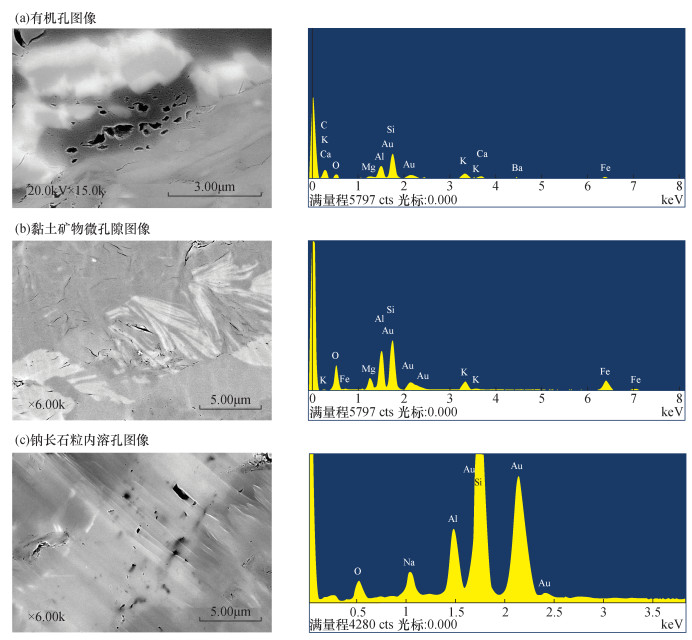
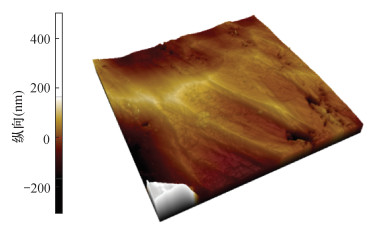
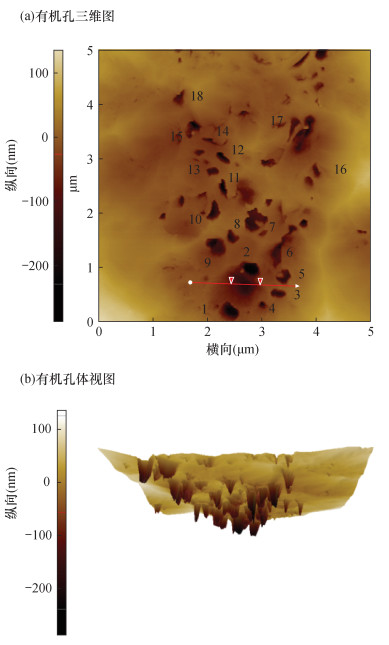
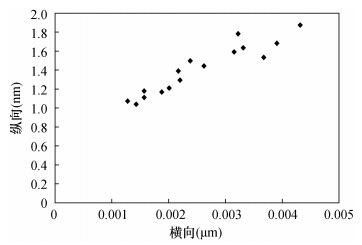
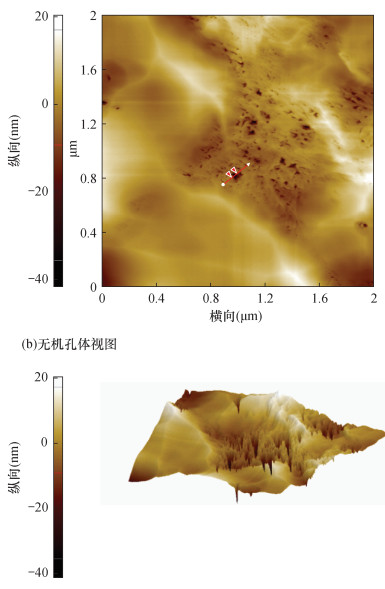
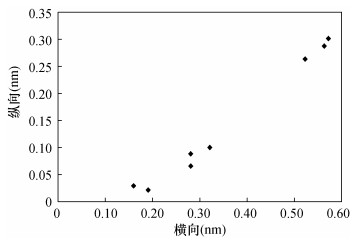
 京公网安备 11010202008159号
京公网安备 11010202008159号